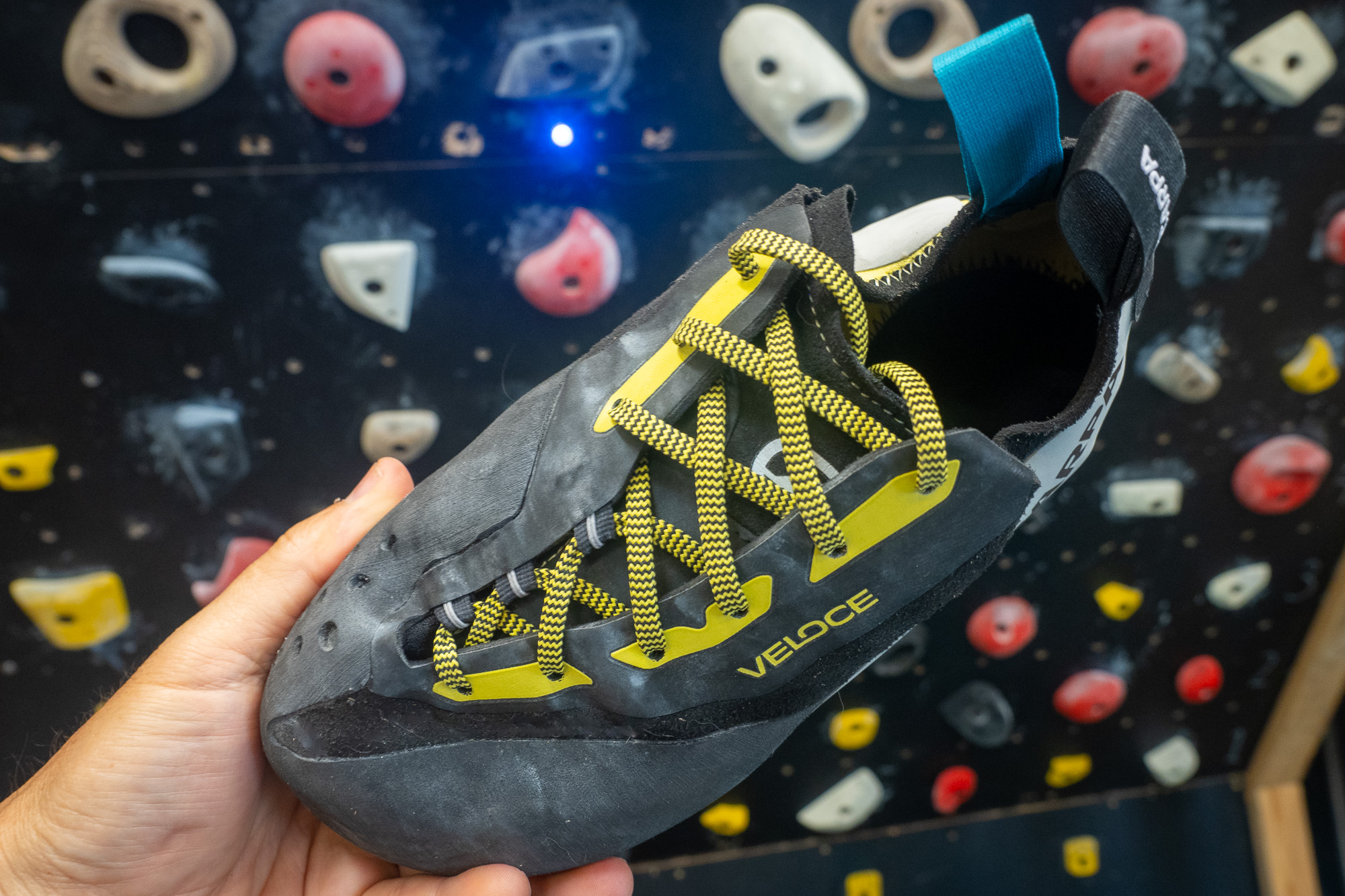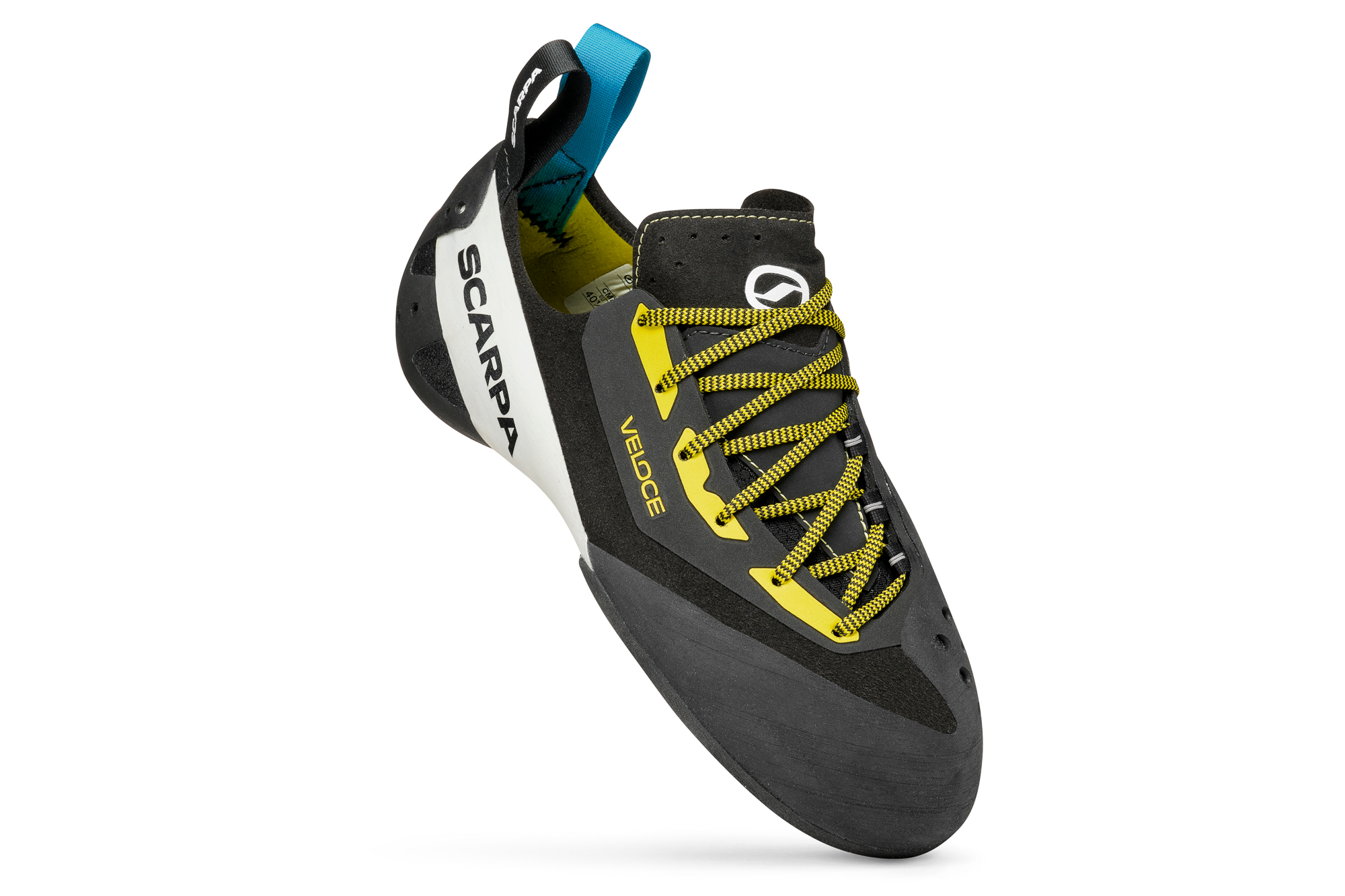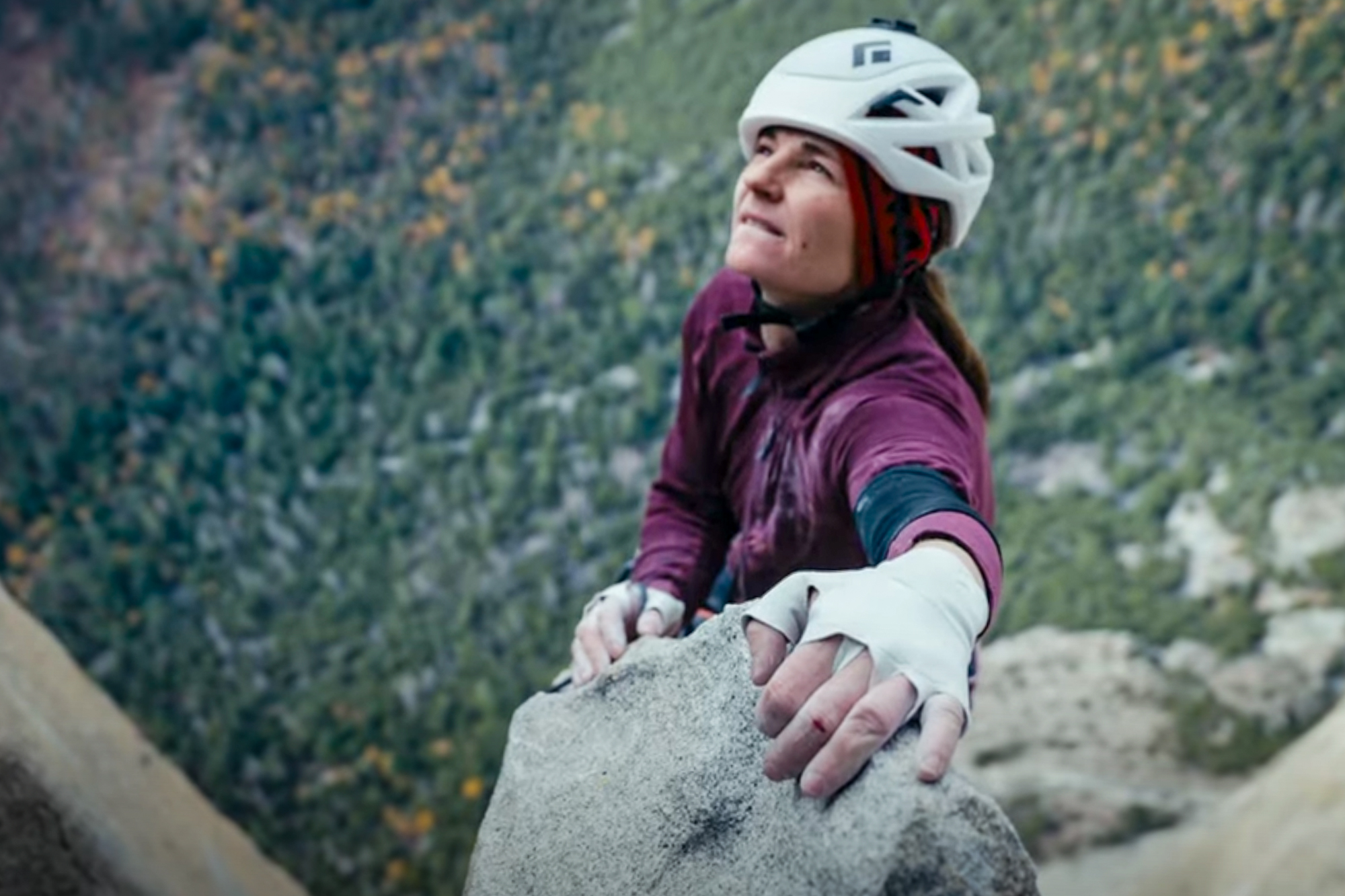Indoor gym climbing tends to be more athletic and dynamic in movement, and the texture of plastic differs greatly from that of natural features. Rock shoe brands understand this, and most have launched indoor and competition-specific climbing shoes. The SCARPA Veloce L is among this subset of rock climbing shoes.
After decades of using the same shoes climbing indoors and out, I finally caved in a few years ago and tried gym-specific shoes on my Moonboard. And yep, they did work better. Seeing how most of my climbing friends and I climb indoors way more often than outdoors, this segment of shoes makes sense. I admit this despite my curmudgeon self stating we don’t need more gear.
I climbed in the SCARPA Veloce L multiple times a week for 4 months, training on my Moonboard, Treadwall, or systems board or climbing in a commercial gym in Austin, Texas. The shoes were tested alongside softer sport climbing or bouldering shoes and other indoor-specific models for comparisons.
In short, the Scarpa Veloce L’s indoor-specific design and features worked remarkably well on both training boards and the gym. It got to the point where I stopped climbing indoors with outdoor shoes. The combination of softness, flexibility, sensitivity, and qualities of the rubber outsole spoiled me. The Veloce L worked so much better on plastic when climbing near the limit.
- Upper material: Polyester microsuede
- Midsole material: 1.0mm Flexan (cellulose)
- Outsole material: 4.0mm SCARPA S72
- Closure: Offset, to-the-toe lacing
Pros
- Very soft and pliable
- Excellent sensitivity
- Good toe hooking ability
- Generous forefoot width for comfort
Cons
- Doesn't fit low-volume feet well
SCARPA Veloce L Technical Specifications
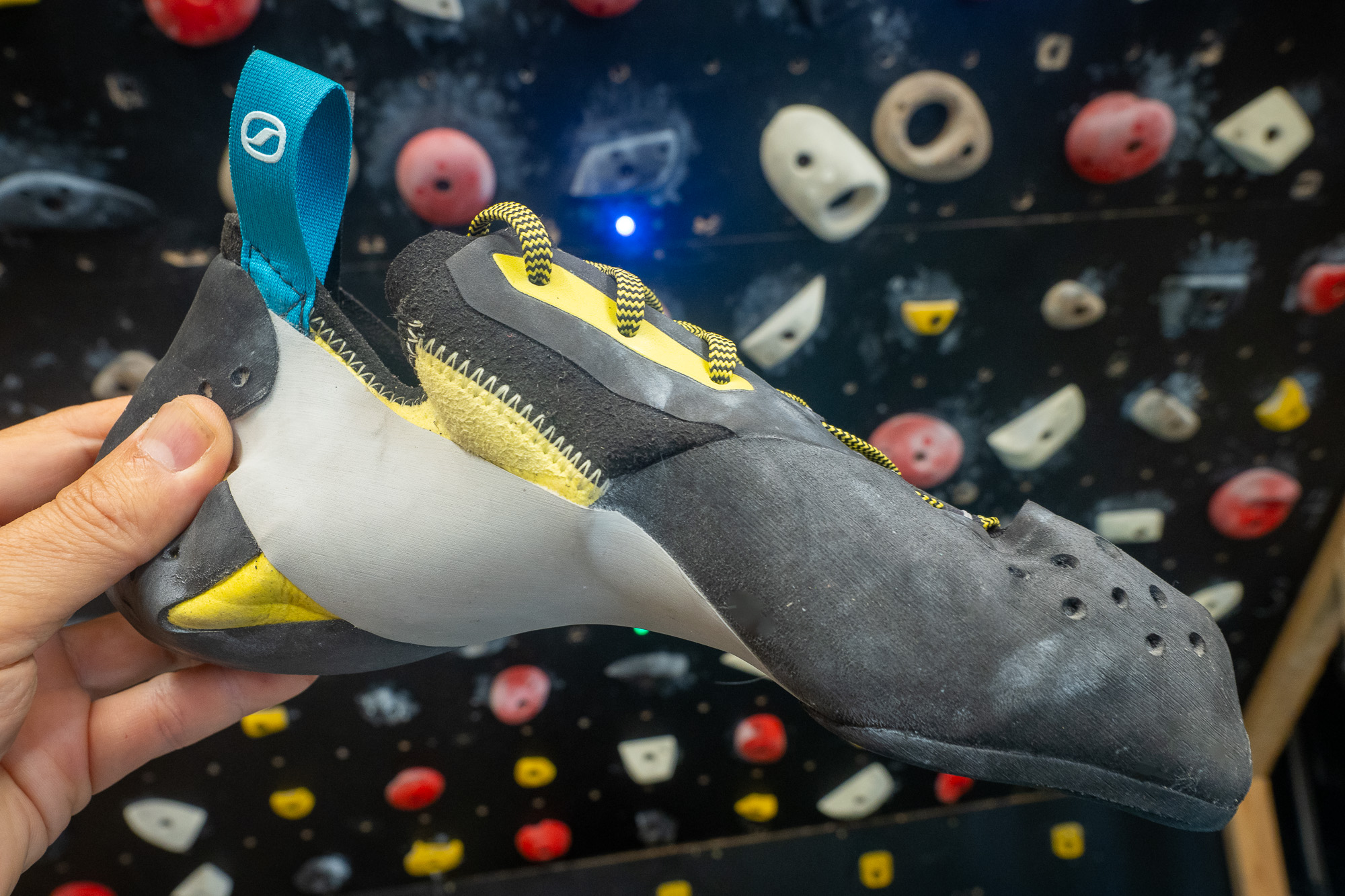
SCARPA uses a polyester microsuede for the seven-panel upper. This is mated to a Flexan (cellulose) 1.0mm midsole and 4.0mm SCARPA S-72 rubber split outsole. The upper has a visually “crooked” offset lacing system, which SCARPA claims affords more adjustability and performance. The toecap rubber is the brand’s M50 formulation.
The last is new for SCARPA. The Italian brand calls it Relaxed Performance Fit (RPF). The shoe has a more generous fit around the fourth and fifth toes, which is clearly visible. It has a much wider and obtuse form around those toes than other high-performance climbing shoes. The Italian brand says this new last improves comfort for intermediate climbers while allowing advanced climbers to extend training sessions.
Overall, the shoe is slightly asymmetric, and SCARPA builds it with a slight downturn.
My size 43 test pair weighs a verified 1 pound, 0.3 ounces. The Scarpa Veloce L has an MSRP of $175 and is available in a women’s-specific version.
First Impressions and Fit
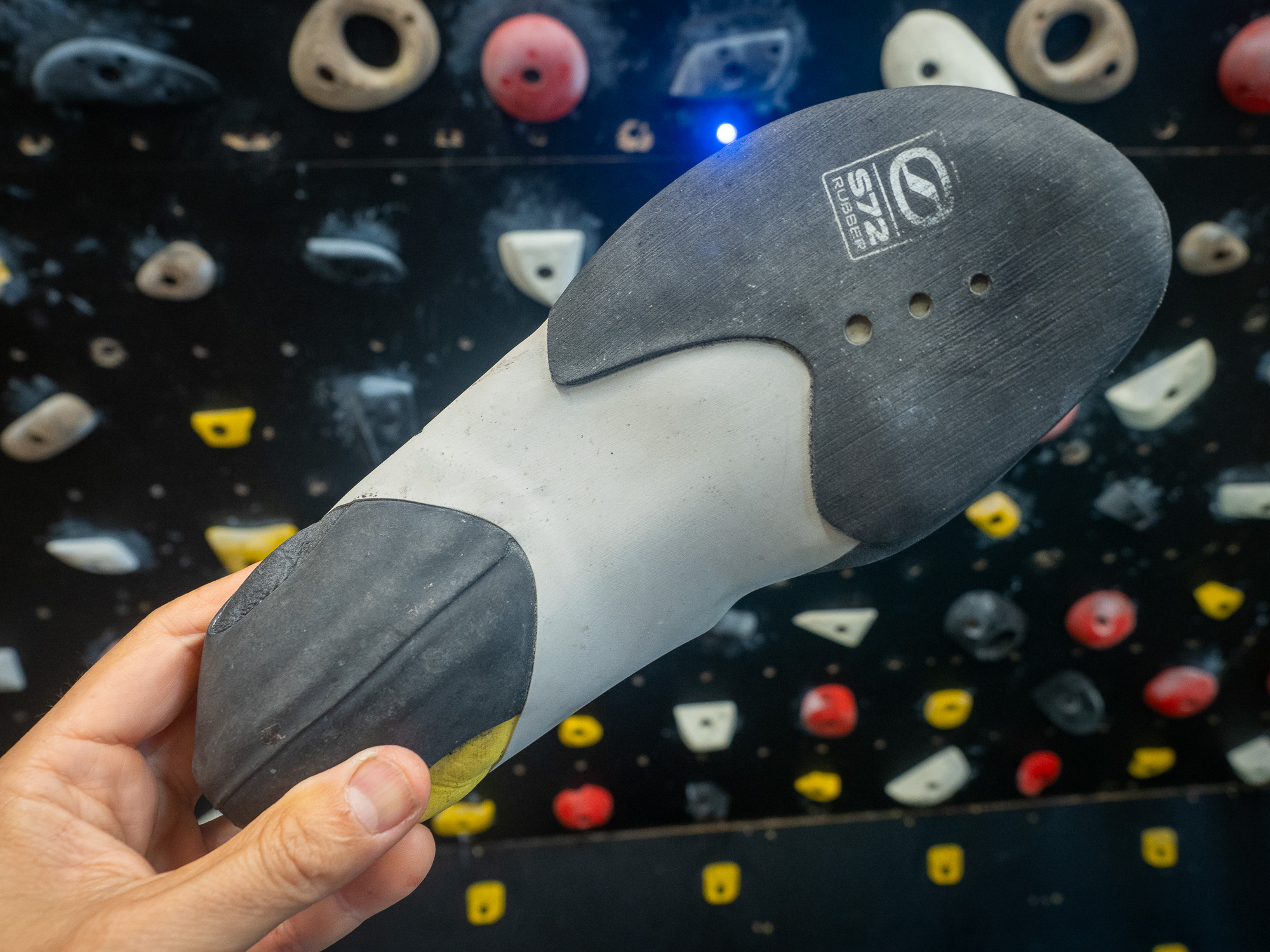
When I first donned the SCARPA Veloce L, the shoe felt light on the foot all around. The upper felt thin, and the outsole was immediately soft, even with the midsole. Also, the rubber on most of the heel felt thin. The entire shoe was instantly supple and super pliable, and it didn’t need a break-in period.
I have a classic duck foot. My heel is very narrow, and my forefoot is laterally wide. But my foot is vertically thin and low volume. The Veloce L fit the width of my forefoot well but was too voluminous. Cinching on the laces to get the upper to clamp down on my forefoot caused folds.
I immediately appreciated the room my little toes had, thanks to the RPF shaping. Those toes felt like they could press down since they actually had the platform to do so.
The heel was the same story; it was too high volume for my diminutive heel. The very back of the heel fit well, but otherwise, it was too big. So, the shoe formed folds in the area, which proved troublesome for heel hooking. But that was particular to my heel size.
All my toes made appropriate contact and pressure on the front of the shoe. The active rand provided a palpable but not overbearing or painful amount of forward and downward pressure at the toes. It also pulled the arch of the shoe to hug my foot when I loaded the shoe.
The size 43 Veloce L fit me correctly based on my U.S. 10 shoe size. They also matched 43s from other brands. The SCARPA Veloce L would fit climbers with larger-volume feet a lot better than they fit me.
The SCARPA Veloce L on the Boards and Blocs
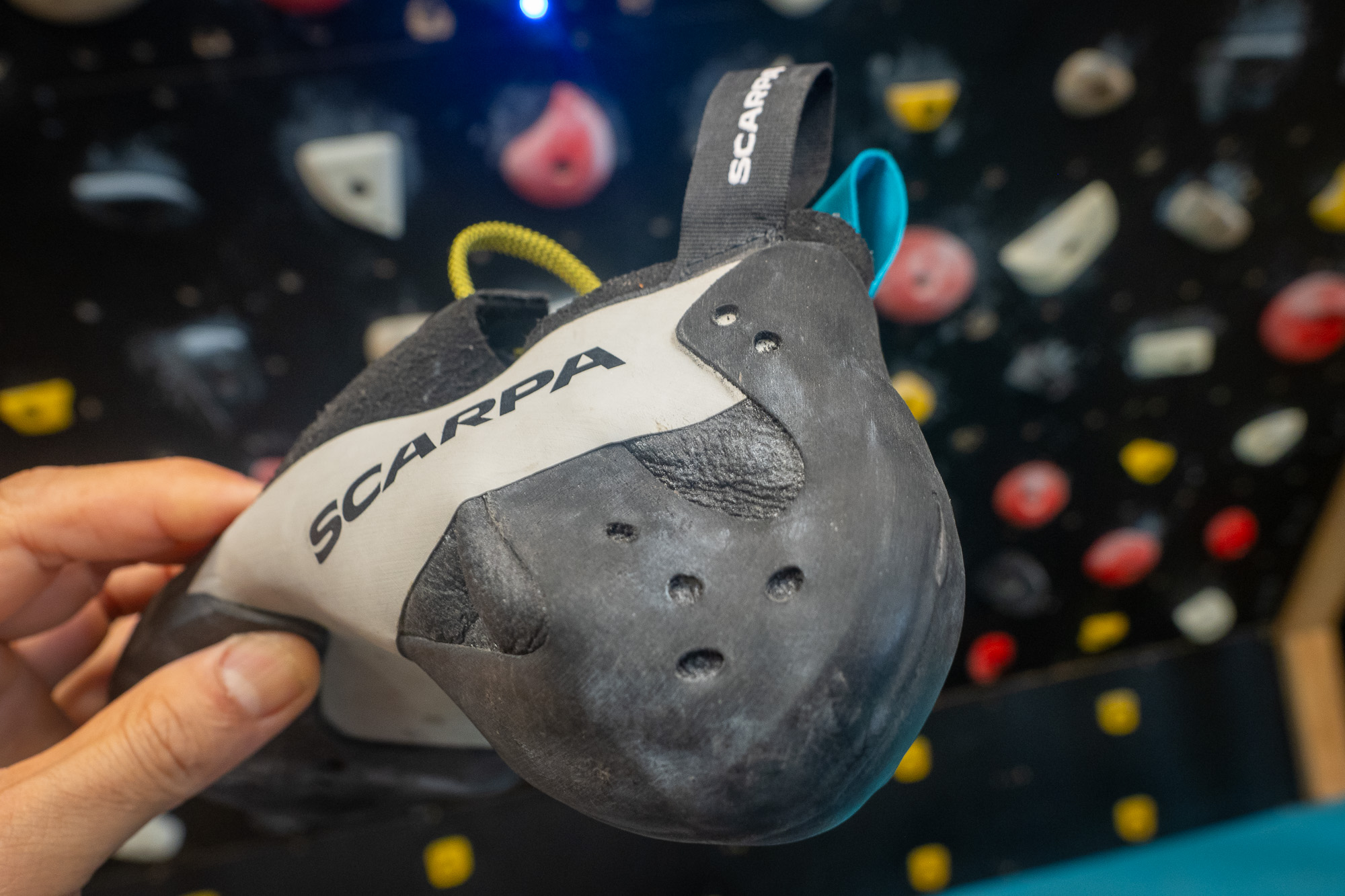
Shoe Pliabiity, Power, and Adhesion
Right away, on the slopey and desperate Moonboard starter feet, the Veloce L’s extreme sensitivity, pliability, and toe-down power were apparent. I could push down with just my toes, using the intrinsic muscles in my feet, and contort the shoe to maintain contact while twisting my foot to wind up my legs and hips.
I got incredible feedback to warn me of the limits of adhesion. And my toes had enough power to pull in as hard as I could with my hamstrings and calves.
The shoes were the softest of the handful of indoor-specific models I was concurrently testing. They were not as soft as the SCARPA Furia Air, but they vied for the second-softest spot. They were quite a bit softer than the SCARPA Vapor S.
The house-brand S72 rubber proved its worth on the Moonboard starter holds as well. The holds are notorious for spitting the strongest off, as they face the wrong way when installed as directed.
They slope downward at a drastic angle. And in the harder grades, the first move is often one of the hardest. Compared to other shoe rubbers I tested at the same time, the S72 was the best at sticking to these often frustrating holds.
Edging
For such a soft shoe, the SCARPA Veloce L could power up moderate edges that are typical of gymnastic problems. But similar to comparable shoes, that was the limit. The 1.0mm Flexan midsole and 4mm rubber outsole provided enough support to power off any Moonboard edges.
However, smaller features typical of outdoor climbing were too much. In the context of what SCARPA designed the shoe for, I didn’t notch it as a negative.
Heel and Toe Hooking
The Veloce L heel is minimally structured on the sides but has a rigid rubber band on the backside that extends from the bottom. This rigid strip afforded power and protection during high-pressure heel hooks, but it had to be a straight-on fit to the foothold.
The bulk of the heel cup is soft, so the sensitivity outside of the harder rubber strip was high. But this also meant wincing when pressure was applied to any prominent edge or point. The rubber coverage in the heel was just adequate; I much prefer a full rubber heel cup, even for indoor use.
The forefoot’s toe covering was generous and sticky. The only part of the toe not covered with rubber was a small strip that housed the to-the-toe offset lacing. The microsuede upper also provided some traction, and the sensitivity was good. The shoe’s ability to conform also added to the SCARPA Veloce L’s great toe-hooking chops.
The Final Say on the Scarpa Veloce L Indoor Climbing Shoe
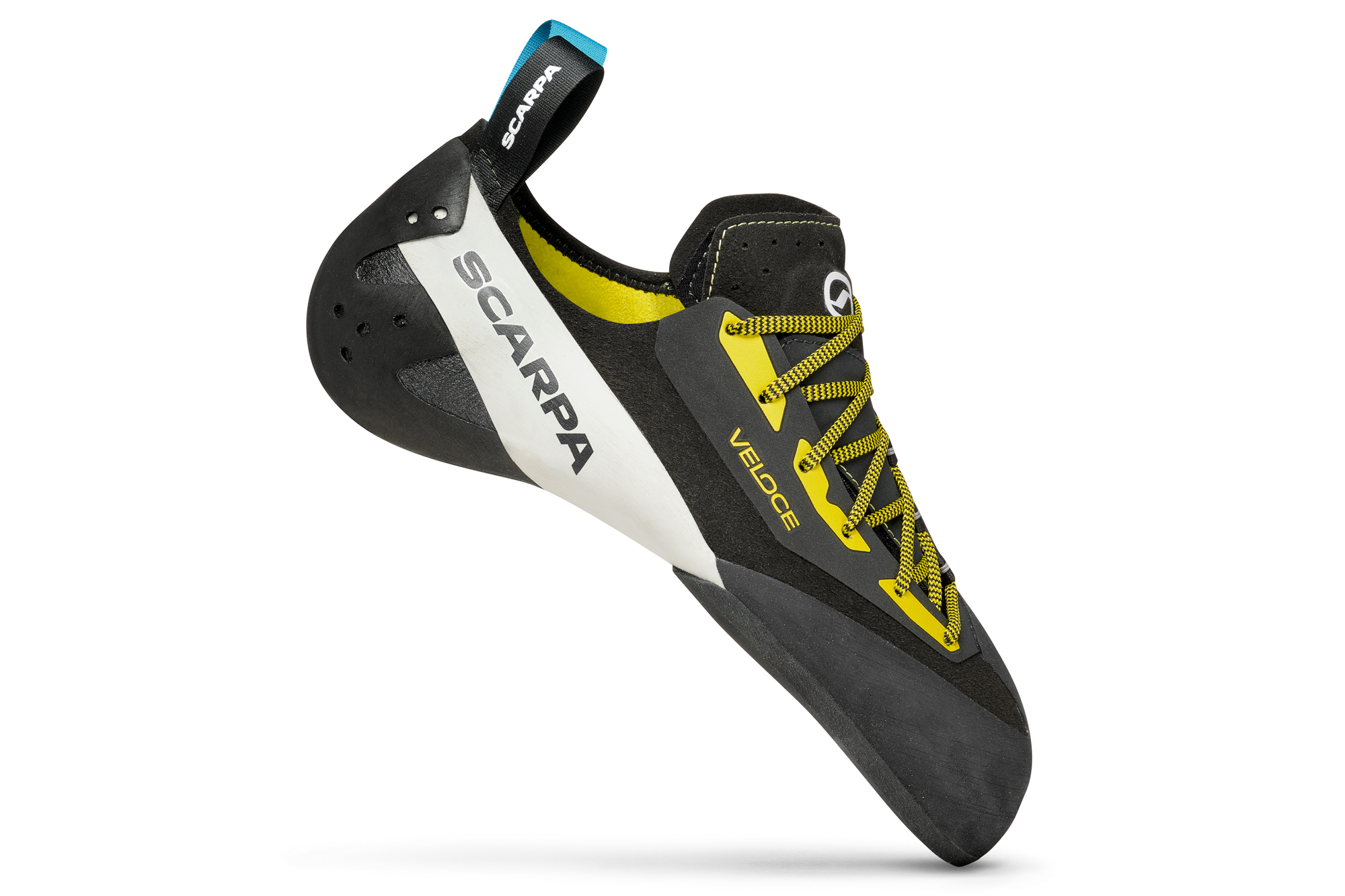
The SCARPA Veloce L won me over. After trying several shoes specifically aimed at indoor climbing or competitions, this is the shoe that stood out as different enough from my high-end outdoor shoes to warrant packing a dedicated indoor gym bag.
The biggest delineators for me were the shoes’ overall pliability and outsole rubber. Even with a 4mm outsole, the Veloce L immediately contorted whichever way I needed it to with minimal effort.
Indoor boulder problems and routes tend to involve twisting the body a lot. This shoe bent and wound around my foot as needed to maintain as much contact with the foothold as possible, regardless of what the rest of my body was doing.
SCARPA’s S72 rubber proved to adhere better than most, especially on slopey or down-facing holds, which are plentiful in indoor climbing. From gargantuan, slopey blobs of plastic to off-angle volumes, the S72 tenaciously held. This was especially true when I took the time to clean it off.
There are shoes that are much better at edging should the problem or route require it. But I found the Veloce L edged adequately for training boards and steeper gymnastic routes and problems at the gym.
I’ll leave you with this testament: The SCARPA Veloce L doesn’t fit my low-volume foot well, but I still lace them up when I hit my boards, which is the hardest climbing I do.
